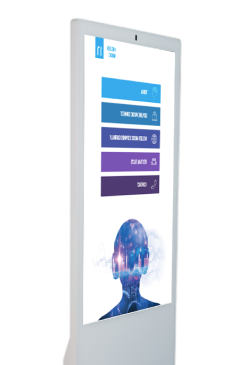

Event Solutions

Our Work

Exploring Translucent LEDs: Technology, Applications, and Future Potential
Translucent LEDs are an exciting advancement in LED technology, providing the same brightness and efficiency as regular LEDs but with the ability to appear nearly invisible when turned off. This feature opens up new possibilities for modern, sleek designs in various industries. This article explores how translucent LEDs work, their key benefits, and where they’re being used today.
What Are Translucent LEDs?
Translucent LEDs, or transparent LEDs, allow light to pass through them, creating a “see-through” effect when they’re not active. Unlike standard LEDs, they’re mounted on clear materials, which blend into backgrounds and create eye-catching visuals only when illuminated. This technology is perfect for applications where subtle, futuristic displays are needed.
How Do Translucent LEDs Work?
Translucent LEDs work by using ultra-thin layers and transparent conductive materials. They’re often arranged in a mesh or grid pattern that enables light to pass between each LED. When turned on, they shine brightly, but when off, they’re nearly invisible, making them ideal for creating displays that don’t obstruct views.
Advantages of Translucent LEDs
- Design Flexibility: Translucent LEDs can seamlessly integrate into various settings without blocking the background, allowing designers to create innovative, modern displays.
- Energy Efficiency: Like regular LEDs, they use less power than traditional lighting, making them cost-effective and eco-friendly.
- High-Quality Display: These LEDs produce clear, vibrant visuals even in bright settings, providing a floating effect that’s engaging and unique.
Applications of Translucent LEDs
- Trade Shows and Events: These LEDs create stunning, interactive displays that attract visitors while allowing visibility through booths and installations.
- Retail Spaces: Used in storefronts, translucent LEDs provide a way to display promotions and product details without blocking merchandise visibility.
- Hospitality Industry: Hotels and restaurants use them for ambient lighting, dynamic messaging, and decorative displays, enhancing guest experiences.
- Corporate Environments: Offices use translucent LEDs for lobby displays, branding, and interactive signage, creating a professional yet engaging atmosphere.
Translucent LEDs are revolutionizing transparent displays, which are now used for applications like storefronts, digital signage, and automotive heads-up displays (HUDs). Companies like LG and Samsung are pioneering this technology, allowing advertisements and information to be displayed without obstructing views. This seamless effect is ideal for merging digital content with physical spaces, creating a futuristic and interactive experience.
Translucent LEDs are changing how we think about lighting and displays by combining transparency with vibrant visuals. Their unique design and versatility make them ideal for industries that want unobtrusive yet impactful digital displays. As this technology develops, we can expect to see even more creative and practical uses, enhancing spaces with immersive, see-through displays.